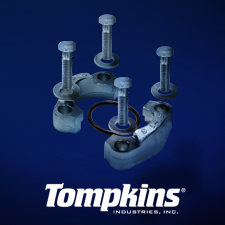The hidden costs of inefficient order management for distributors
By Sahitya Senapathy
Distributors’ order management processes are often hampered by inefficiencies, including: (1) data silos and poor integration, which slows order processing, (2) manual workflows for data entry, order approval, invoicing and status updates, (3) stock visibility and availability issues, which can lead to fulfillment delays, (4) errors in order details, pricing or shipping that force rework, and (5) inefficient picking and packing due to poorly organized warehouses and lack of modern technology.
While some distributors may have learned to live with these inefficiencies, they must consider the ripple effect across their organization and with their customers.
These have the potential to hurt profitability, customer satisfaction and even a distributor’s competitive advantage.
Consider these hidden costs:
Lost Revenue. Time is money. Slow quote and order processing can mean missed sales, canceled orders and frustrated customers who may turn to your competitors because they are simply faster. Every delay in turn affects cash flow and profitability. For example, if you struggle with backlogged orders, you may not only lose sales but long-term customer trust.
Increased Operational Costs. Manual workarounds and rework increase costs. Customer service teams can also get bogged down managing order status requests and complaints. To compensate, distributors may expedite shipping. These costs add up, making slow order management a threat to margins.
Broken Trust. When orders are consistently delayed or incorrect, customers lose confidence. They may start looking for alternative suppliers. Even a single poor experience may hurt long-term brand reputation.
Inventory Management Challenges. When orders are delayed, it's hard to maintain accurate inventory levels. It also increases the risk of overstocking or stockouts. Both hurt profitability. Overstocking ties up cash, and stockouts lead to missed sales and frustrated customers. Poor inventory management also strains cash flow.
Compliance and Penalty Risks. Slow order management may also result in fines due to not meeting vendor contract terms. It can also trigger chargebacks and return costs.
So, what’s the solution?
Distributors need to invest in a mix of better processes and technology.
- Automate where possible, using AI-driven order management. Automation reduces the work that your team doesn’t want to spend time doing while accelerating order fulfillment and minimizing errors. AI-driven automation can also help you prioritize urgent orders and flag discrepancies.
- Improve system integration. Disconnected systems create delays. Distributors must connect ERP, CRM and OMS for seamless data flow. That will ensure real-time inventory tracking, order status updates and fewer bottlenecks.
- Eliminate bottlenecks. Manual data entry, redundant approvals and fragmented processes can slow down order processing and increase the chance for errors. Distributors need to automate routine tasks and optimize workflows.
- Improve customer communication. Just like tracking a pizza delivery, customers expect instant updates on their business orders. Offer real-time tracking, automated notifications and self-service portals so customers can check order status, make adjustments and reduce the need for customer service inquiries.
- Invest in scalable solutions. Outdated systems can become a bottleneck as you grow. Invest in technology that scales with demand, automates complex processes and adapts to new business needs without increasing costs or requiring constant manual intervention.
AI agents can help with each of these five bullets: They’ve emerged as an effective solution for improving and streamlining order management for distributors. AI agents use AI and machine learning to understand unstructured data from multiple formats; handle unique company requirements, such as volume pricing or customer-specific naming conventions; and interact with other systems in real time to complete fulfillment.
For example, when a customer submits an order via email, an AI agent can extract the relevant order details, validate the information with other systems and enter it into the system, just as a human would.
A detailed and complex request would take hours of work for a typical customer service or sales rep, switching between systems and manually inputting and checking data. An AI agent takes just seconds.
Take a close look at your current processes and act:
- What repetitive, high-volume tasks are slowing down operations?
- What is your error rate in frequent, high-volume tasks such as order entry or invoice matching?
- How complex and rigid are your current automation efforts?
- Are you dealing with highly variable data, such as orders arriving through multiple channels in multiple formats?
- Does your technology require frequent human intervention for manual data entry or decision-making?
The hidden costs of inefficient order management are significant. Delays, errors and workarounds don’t just affect daily operations, they erode profitability, damage customer relationships and put distributors at a disadvantage. But the right mix of automation, AI-driven solutions and process automation can transform order management from a bottleneck into a competitive advantage.
 Sahitya Senapathy is the CEO of Endeavor.ai, an Agentic AI sales order management automation solution for manufacturers and distributors. Before founding Endeavor.ai, Sahitya led AI teams at Palantir, where he implemented Generative AI at Fortune 500 manufacturing and distribution companies. He was also a founding team member of AWS AI research building Amazon Q, the infrastructure for Amazon's LLM-like ChatGPT. He was the youngest-ever government contractor in American history, joining the U.S. Air Force at 16 years old and building autonomous drones with a secret-level clearance. Sahitya has been featured in Business Insider, Fortune, Axios and more. Reach him at sahitya@endeavorai.com.
Sahitya Senapathy is the CEO of Endeavor.ai, an Agentic AI sales order management automation solution for manufacturers and distributors. Before founding Endeavor.ai, Sahitya led AI teams at Palantir, where he implemented Generative AI at Fortune 500 manufacturing and distribution companies. He was also a founding team member of AWS AI research building Amazon Q, the infrastructure for Amazon's LLM-like ChatGPT. He was the youngest-ever government contractor in American history, joining the U.S. Air Force at 16 years old and building autonomous drones with a secret-level clearance. Sahitya has been featured in Business Insider, Fortune, Axios and more. Reach him at sahitya@endeavorai.com.













